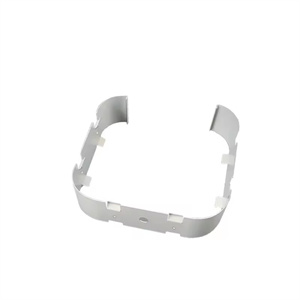The blackening treatment of “High Precision Stamping” parts refers to a surface treatment technique carried out after manufacturing high-precision stamped parts to enhance their corrosion resistance, improve appearance, or increase wear resistance. Blackening treatment, also known as oxidation treatment or blueing treatment, is a chemical or physical method that forms a dense oxide film on the surface of a metal, making it appear black or dark blue.
The blackening process of high-precision stamped parts usually includes the following steps:
Cleaning: Firstly, it is necessary to thoroughly clean the surface of the High Precision Stamping parts to remove oil, rust, and other impurities. This step is crucial to ensure that the oxide film can form uniformly and densely.
Degreasing: If there is oil stains on the surface of High Precision Stamping, degreasing treatment is required. This can be achieved by using appropriate degreasing agents or solvents.
Pickling: Pickling can further remove oxides and impurities on the surface of High Precision Stamping parts, and improve the activation energy of the metal surface, which is conducive to the formation of oxide films.
Blackening treatment: This is a crucial step in the entire process. According to specific process requirements, different blackening methods can be used, such as chemical method (acid washing method, alkali washing method) or physical method (high-temperature oxidation method, wet electrochemical method). These methods can all form a dense oxide film on the metal surface, thereby achieving a blackening effect.
Post treatment: After blackening treatment, it may be necessary to perform some post-treatment on High Precision Stamping parts, such as cleaning, drying, oiling, etc., to further improve their corrosion resistance and service life.
For high-precision stamped parts, blackening treatment can not only improve their corrosion resistance and wear resistance, but also improve their appearance quality. Meanwhile, since blackening treatment forms a dense oxide film on the surface of the part, it will not have a significant impact on the dimensional and shape accuracy of the part.
It should be noted that during blackening treatment, strict control of process parameters and operating procedures is required to ensure the stability and reliability of the treatment effect. At the same time, it is also necessary to pay attention to environmental protection issues and avoid the pollution caused by waste liquid and exhaust gas generated during the treatment process.
